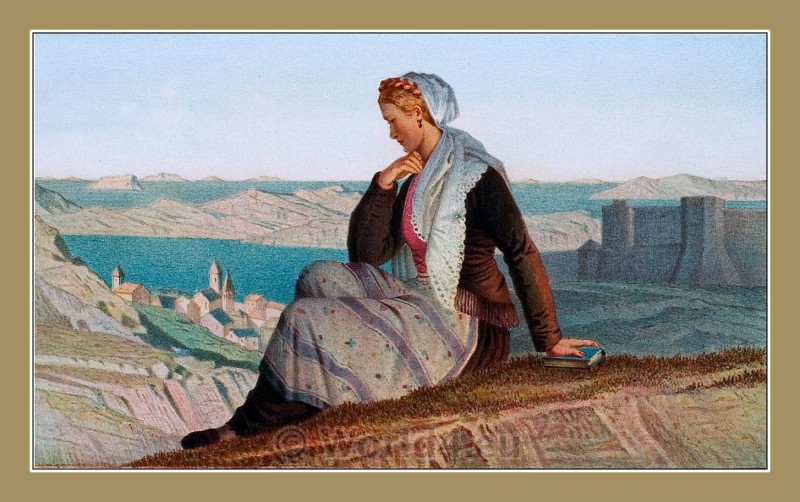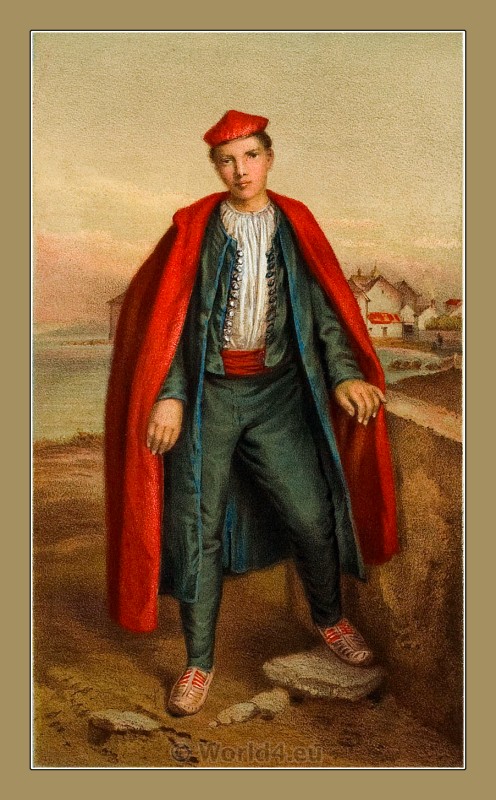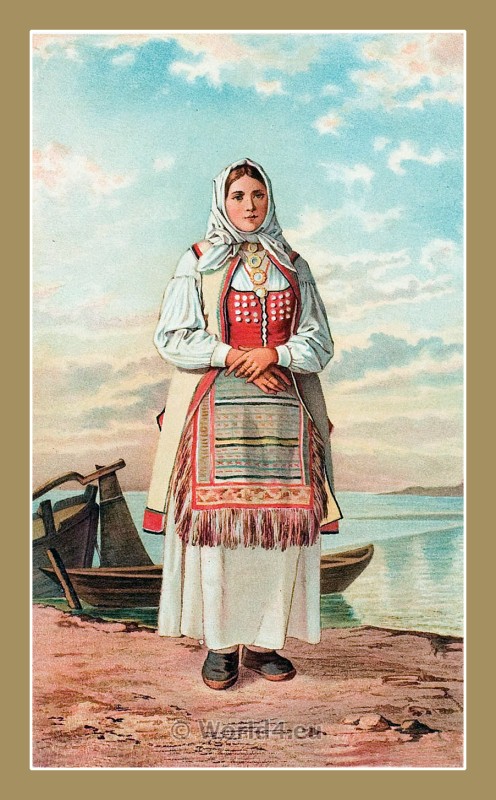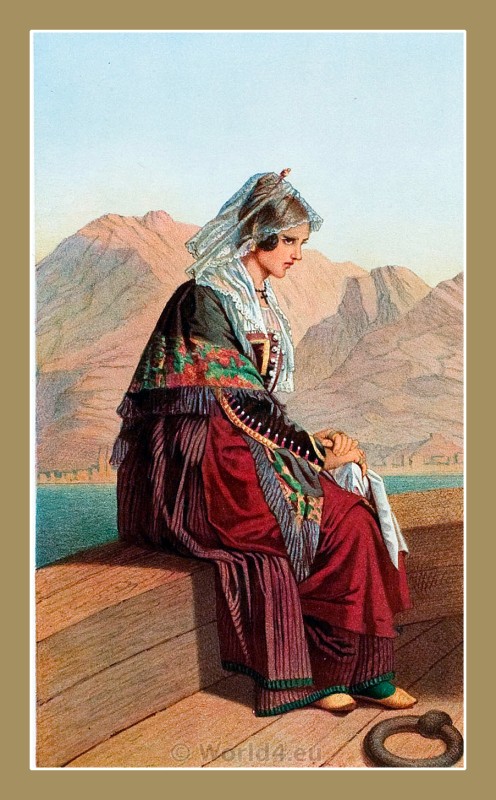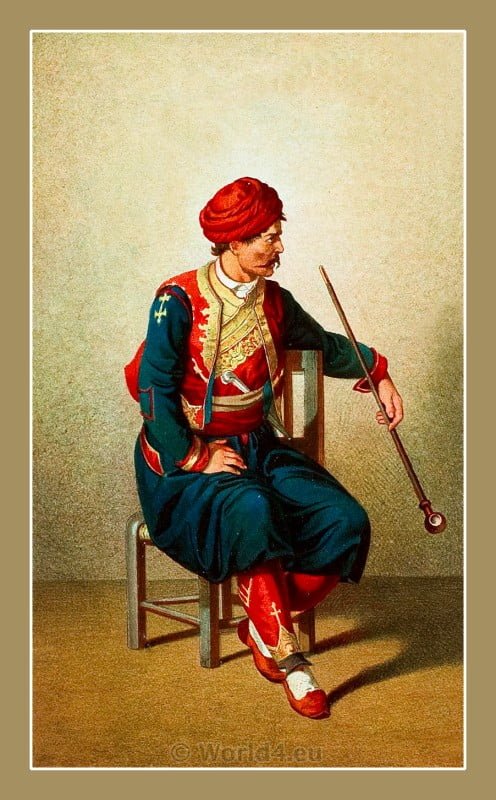
Man in traditional costume from Dubrovnik, Croatia 1870.
(MUŠKA NOŠNJA IZ DUBROVNIKA)
Dubrovnik, formerly known as the Republic of Ragusa (Latin Rausium, later Ragusium; Italian and German Ragusa), is a town in southern Croatia on the Adriatic coast. In 1979 the entire old town was included in the UNESCO World Heritage List. For centuries, Dubrovnik was an independent city republic that maintained trade relations with large parts of Southeastern Europe and the Mediterranean. Besides the name of the city the motto “Libertas” (lat. freedom) is still emphasized. Today, this name can be found among other things in the motto of the Dubrovnik Festival Weeks for Music and Theatre.
Dubrovnik is considered one of the most beautiful cities in the Mediterranean region and is a centre of tourism. The world’s oldest arboretum, Arboretum Trsteno, which was built around 1492, is located near the town of Dubrovnik.
Dubrovnik serves as the location for numerous scenes from the fantasy TV series Game of Thrones. Among others, the fortress Lovrijenac, the Pile Gate and parts of the city fortifications were used as locations, mainly for the capital Königsmund and the city Qarth.
Source: The Serbs in the Adriatic. Their types and costumes. Published 1870-1878. Brockhaus Leipzig Germany.


